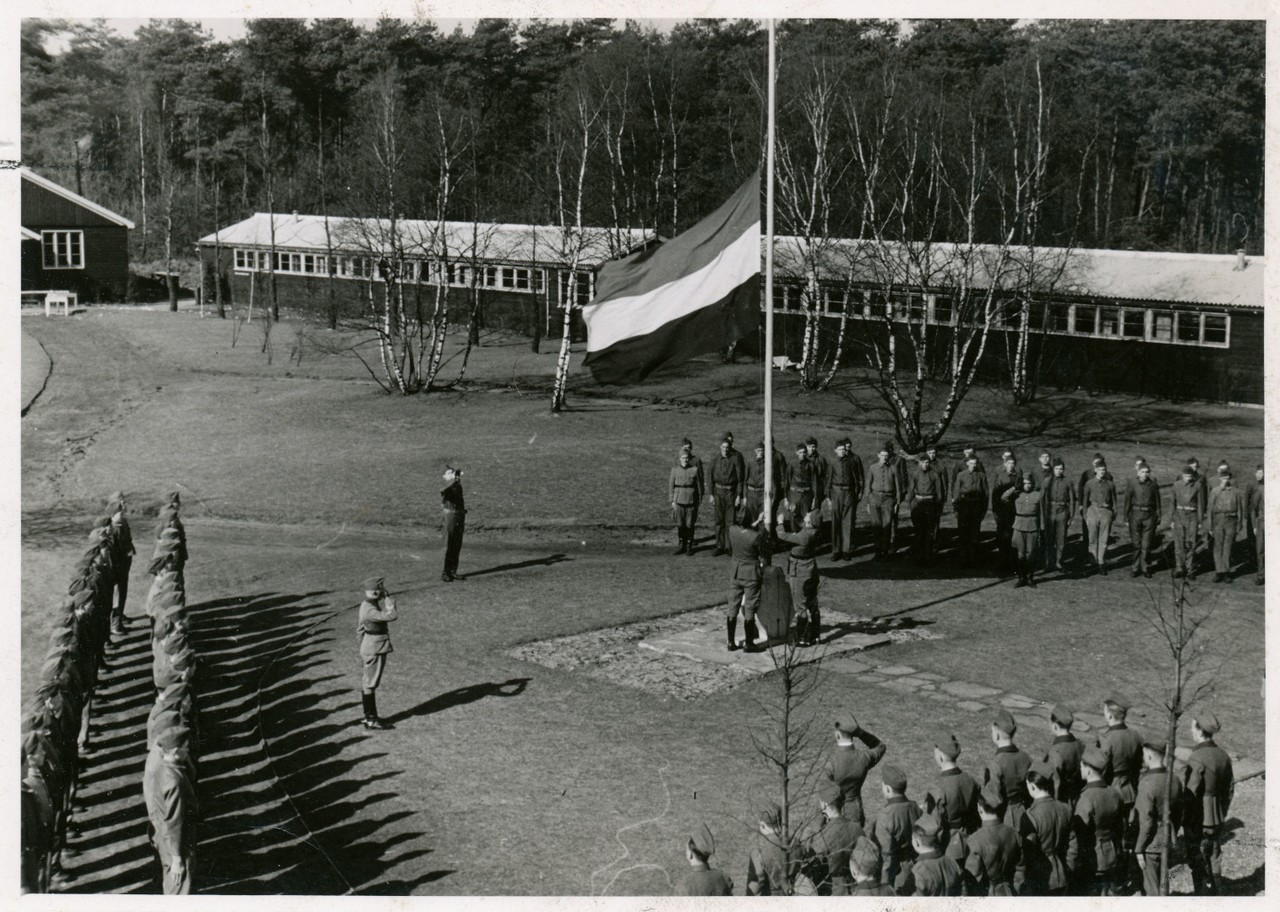The Dutch Labour Service (NAD), established on 6 October 1940, aimed to educate the Dutch people in the spirit of National Socialism. The predecessor of the Labour Service was the Reconstruction Service, in which Dutch soldiers from the disbanded army were required to serve. Initially, joining the NAD was voluntary, but due to a lack of interest, compulsory categories were introduced from the beginning of 1942. The Netherlands had between 60 and 80 labour camps, eight of which were in Friesland and two in Hemrik. In addition to activities such as military exercises, sports, singing and education, the labour services mainly consisted of land reclamation, excavation work and potato harvesting.
A whiff of wrongdoing
Although the NAD was a Dutch government organisation and therefore not considered wrong, there was still a whiff of wrongdoing about it. The leadership consisted largely of members of the NSB and supporters of National Socialism. Through education (training), National Socialist ideas were spread among the young labourers.
Koenraad the labourer
For NAD propaganda, the labourer “Koenraad” was depicted on recruitment posters and in newspapers. Koenraad is a fictional character. A “real” Dutch boy who was well-mannered, brave and willing to work. The aim was to get young Dutch men enthusiastic about the NAD. The propaganda backfired. Koenraad was considered too well-behaved and caused annoyance. As a result, the number of applications declined.
Mad Tuesday, end of the NAD
On Tuesday, 5 September 1944, Dutch Prime Minister Gerbrandy announced in a radio address from London that the Allies had crossed the Dutch border. This caused many German soldiers and members of the NSB to panic and flee en masse. Panic also broke out among the leadership in the NAD labour camps. That same day, virtually all labour camps throughout the Netherlands were emptied. Five days later, on 10 September, the NAD was dissolved.
Internment period
When the municipality of Opsterland was liberated on 14 April 1945, the former Sparjebird labour camp in Hemrik lay deserted. After five long years of occupation, a hunt for “German sympathisers” began immediately. On 17 April, three days after the liberation, the first group of NSB members, collaborators and “moffenmeiden” (women who collaborated with the German forces) were arrested and taken to Sparjebird. There they remained awaiting their punishment. A common punishment was deprivation of voting rights for a number of years, in some cases even for life.
During the internment period, the camp was guarded and surrounded by barbed wire. The atmosphere during those first weeks and months was grim. Some of the guards were members of the resistance who were full of resentment and took their anger out on the prisoners. Later, the camp was guarded by professional and disciplined guards.
From June 1946, Sparjebird was transferred to the Directorate-General for Special Justice. From that moment on, it was a camp for young political offenders who needed to be re-educated. In June 1947, the camp was transferred to the Special Youth Care Bureau. Soon after, the camp was closed and the barracks and inventory were sold.
